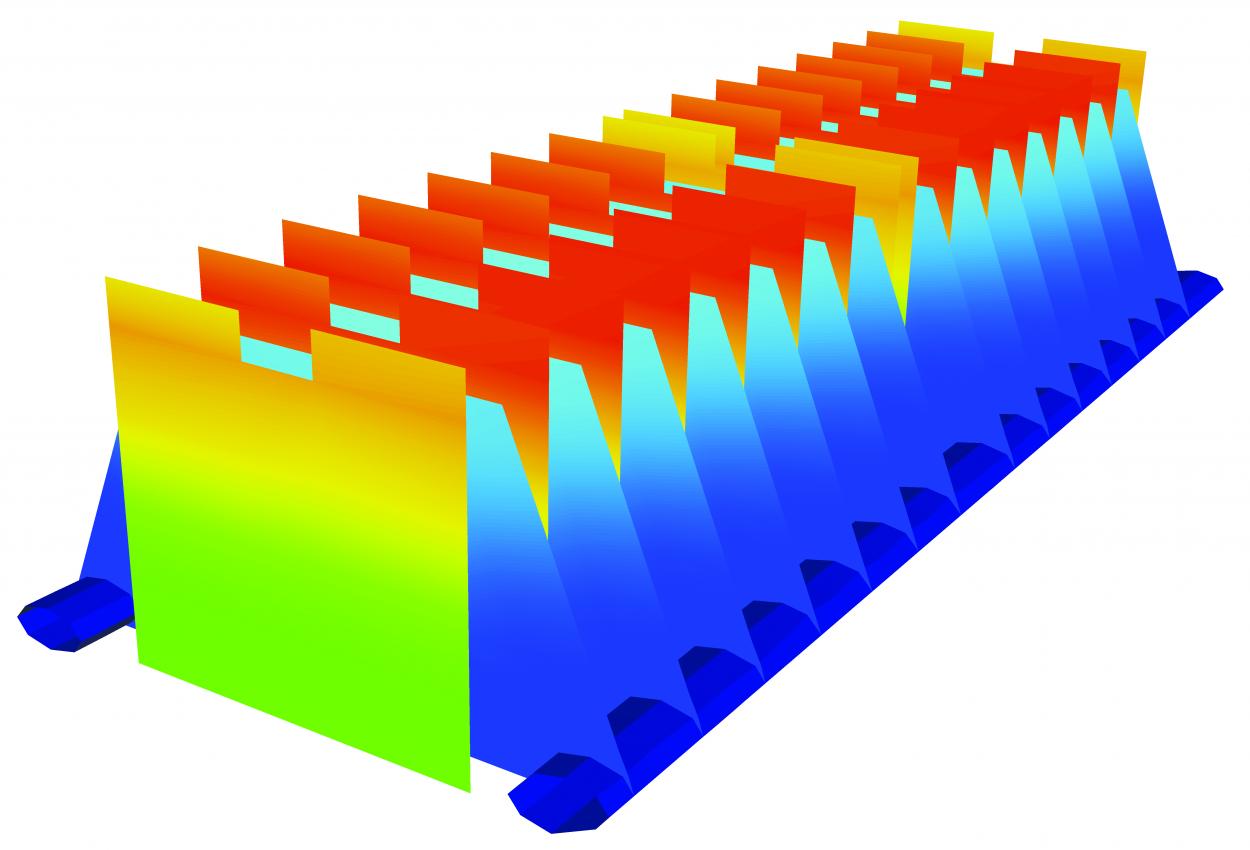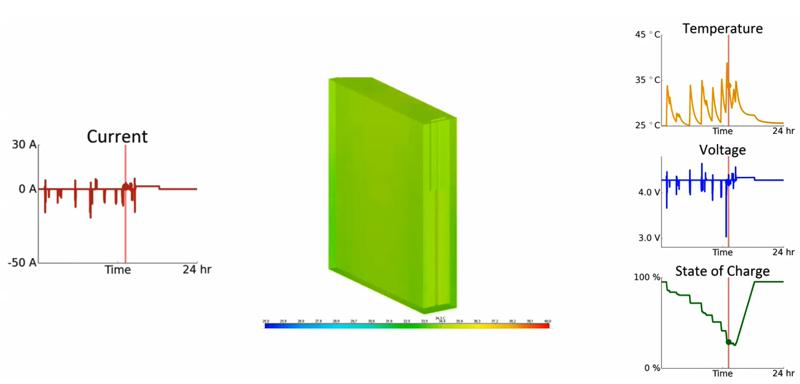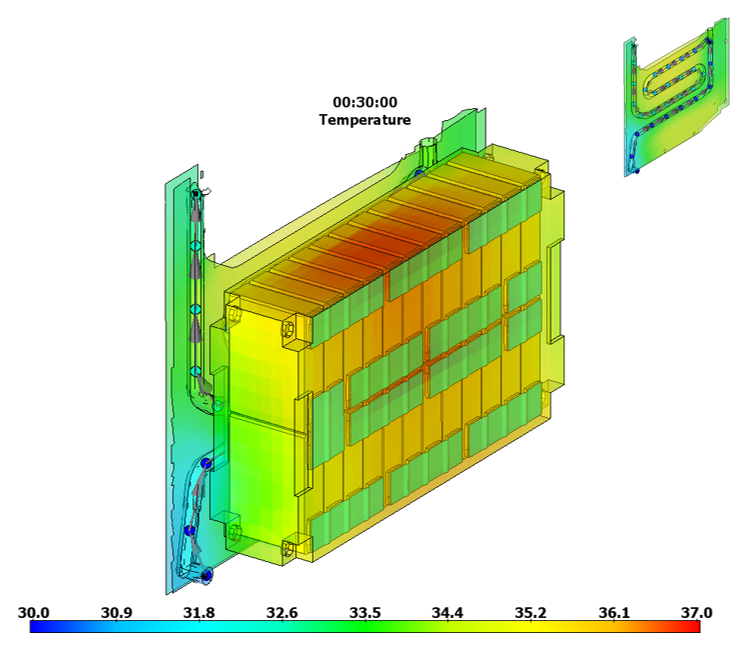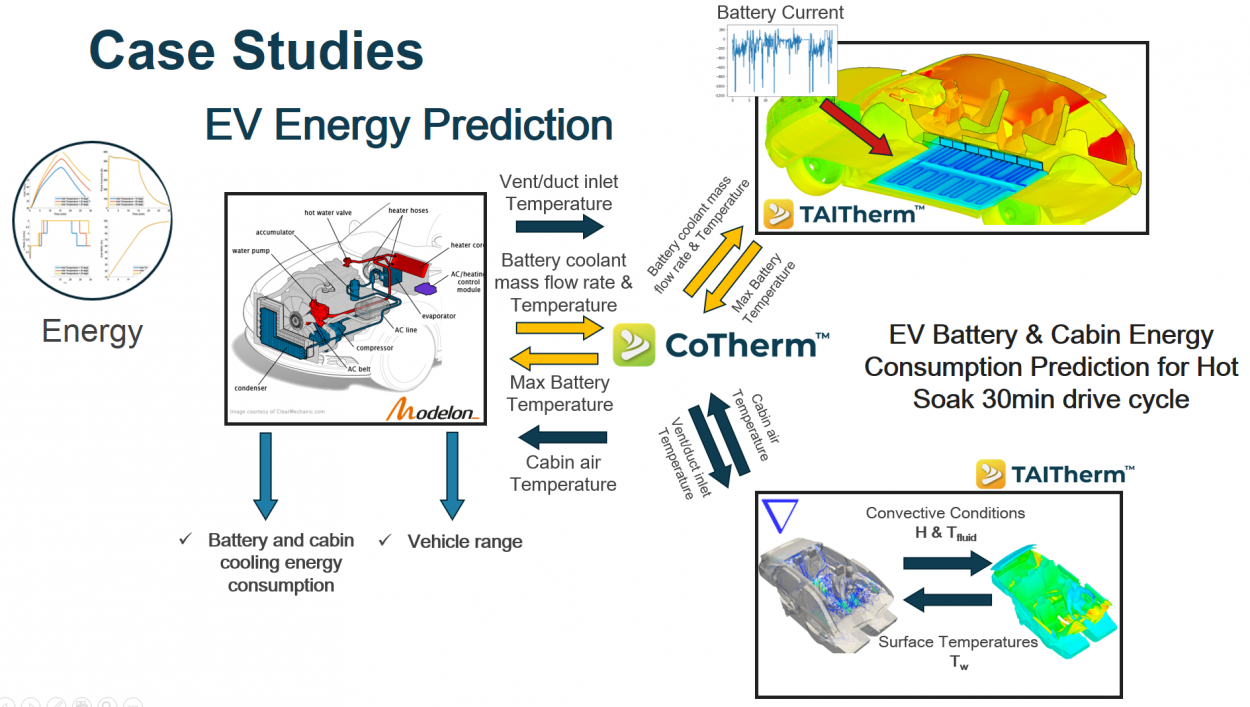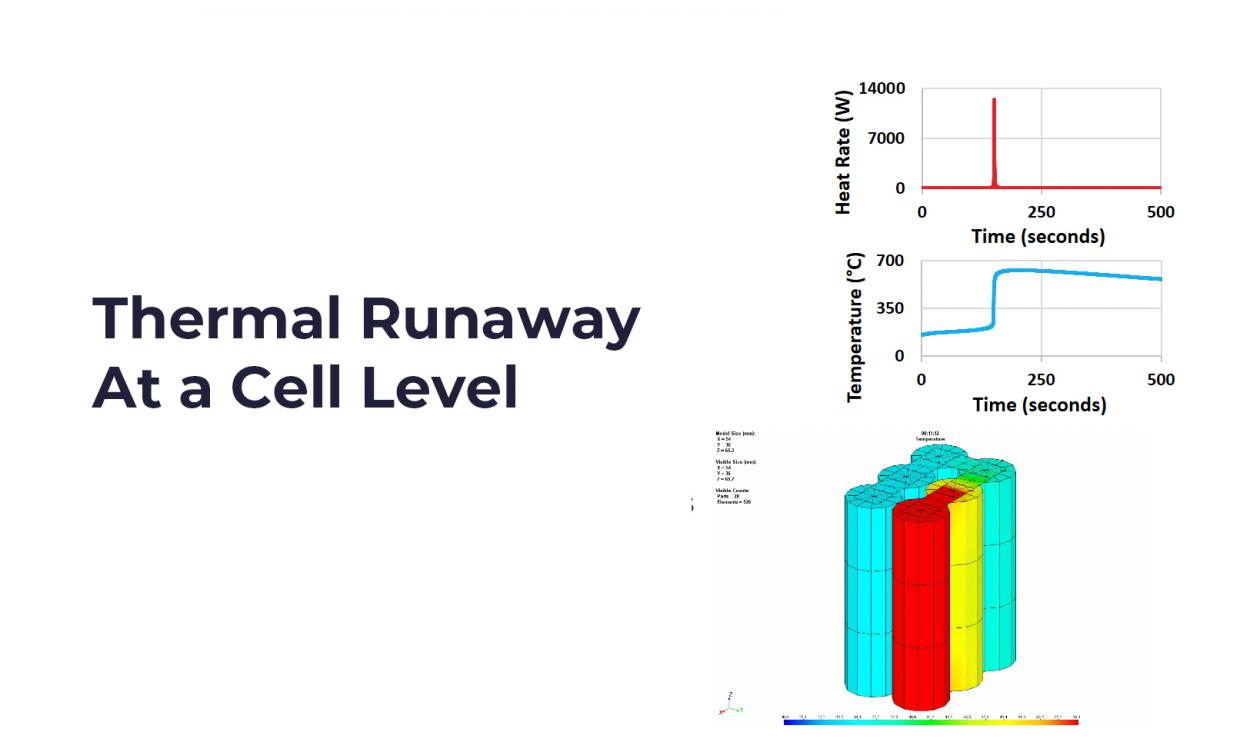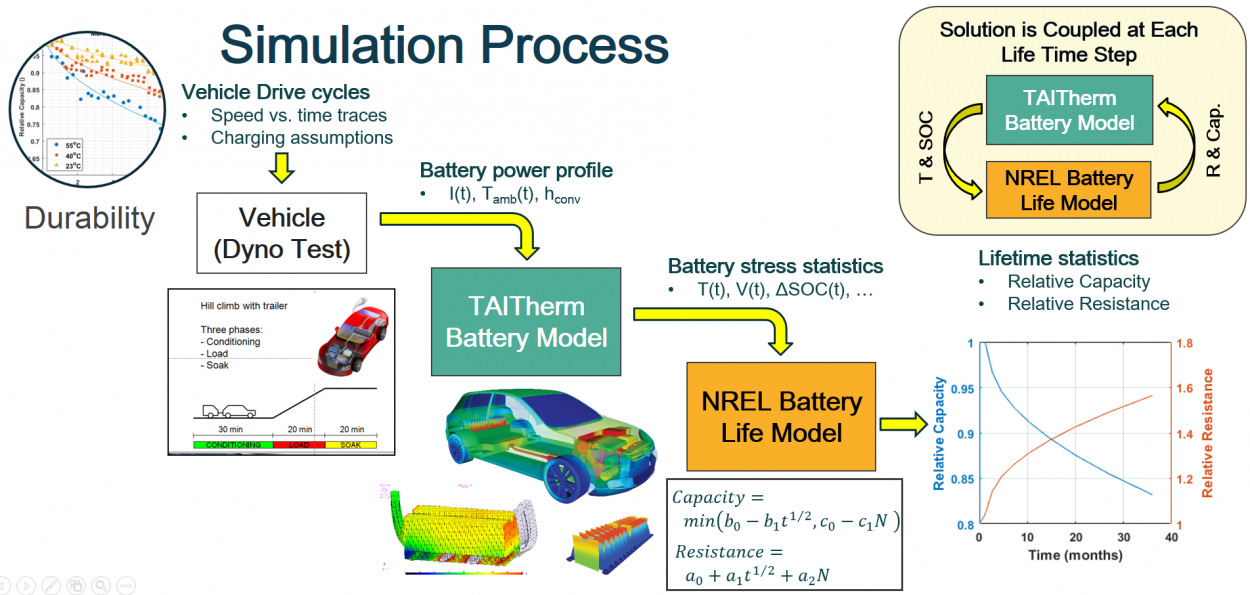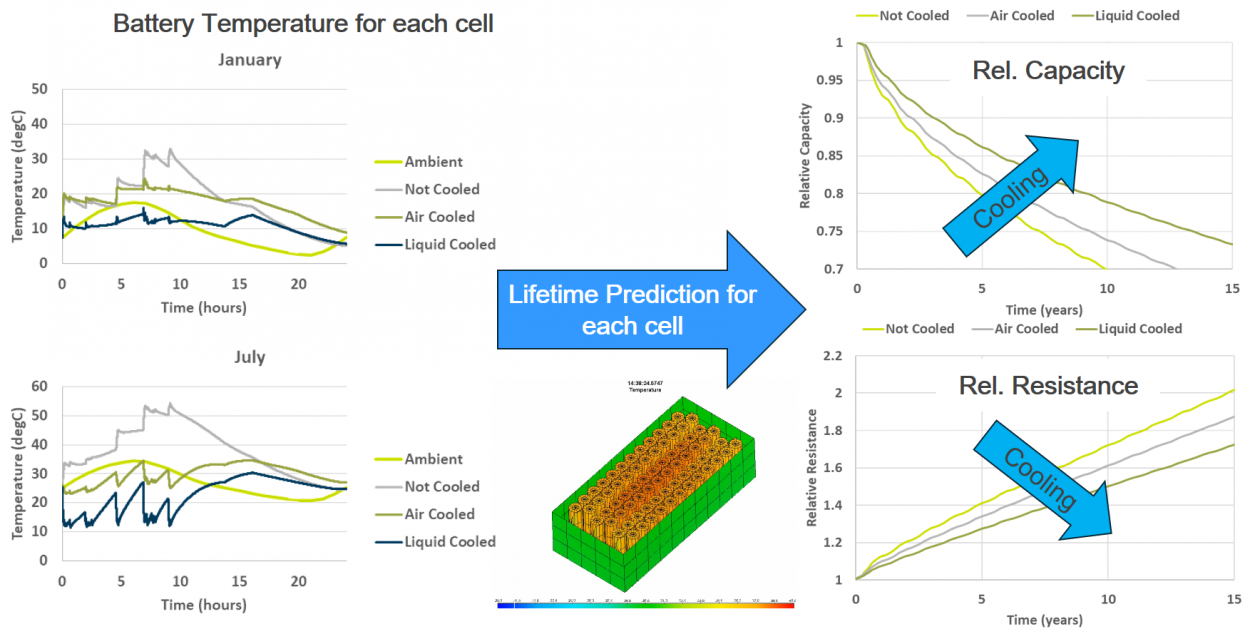Battery packs have the largest impact on the design and performance of hybrid and electric vehicles (xEVs) compared to any other component or sub-system in a vehicle. They can make up over half of xEV's cost and weight. Batteries have a small operating temperature window, which also strongly influences the efficiency and designs of other powertrain components and cooling systems.
Battery Thermal Modeling
Modeling battery packs is a challenging feat due to considerations such as:
- Complexity in the thermal, electric, and chemical domains
- Models must run fast and predict sub-component temperatures accurately
- Models typically include battery management systems and electrical control systems
- They must operate safely to avoid thermal events which are dangerous to xEV occupants
- They must last the lifetime of the vehicle
Thermoanalytics develops comprehensive thermal/electric modeling tools to design and integrate batteries and energy storage systems. These systems must be designed for performance, safety, and reliability, and often, these factors must be evaluated simultaneously and design trade-offs considered. Thermoanalytics' battery modeling solutions include battery thermal management, battery thermal runaway and venting, and battery lifetime.
Modeling Solutions
Battery Thermal Management
ThermoAnalytics' battery thermal management modeling capabilities include fast-running battery packs, pack-level current balancing algorithms, and coupling with battery models from other software tools. Thermonalytics' tools can also solve thermal engineering issues around integrating the battery in the vehicle. These include:
Advanced co-simulation methods between TAI battery models and the vehicle system model enable design teams to optimize the control strategies of the vehicle further. Among these are:
- Optimizing the temperature and flow rate of the cooling fluid in a cooling plate
- Balancing cooling requirements of the cabin and the battery based on environmental and driving conditions
Battery Thermal Runaway and Venting
Thermoanalytics' battery thermal runaway modeling capabilities include predicting heat generated inside a battery cell during the runaway process, venting gases from the cell, hot gas impingement, propagation of cell-to-cell failure, and heat protection of surrounding components, vehicle occupants, and equipment.
Thermoanalytics' tools can simulate long transient events such as the "5-minute escape test". Such simulations help engineers design systems to:
- Detect and mitigate thermal runaway propagation in the battery pack
- Protect sensitive components around the battery pack (power electronics, brake fluid lines)
- Reduce fire risk in a cabin (insulation and carpeting)
Battery Lifetime Prediction
TAI has battery aging and degradation models that include multiple degradation mechanisms, and we have developed automated model fitting procedures for an adaptable battery aging model framework for end-to-end remaining useful life prediction.
TAI leverages the National Renewable Energy Laboratory’s (NREL) battery lifetime prognostic model to simulate cells' capacity fade and resistance growth in battery packs. Degradation mechanisms that are considered include:
- Calendar fade due to storage of the battery and usage over long durations
- Cycling fade due to the repeated charge and discharge of each cell
- Acceleration factors for each degradation type that take into account the effects of elevated temperatures and high state of charge
The NREL battery lifetime model is coupled with TAITherm using CoTherm. The coupled solution takes battery stress statistics that are output from TAITherm and uses them to predict the degradation of each cell. Battery capacity and resistance are updated in TAITherm at each lifetime step so that their effect on battery degradation can be captured. This approach is important for:
TAI tools help engineers design systems with a lifetime in mind. Specific problems can be tackled, including:
- Evaluating different cooling strategies
- Considering many use cases, such as different geographic locations and urban versus rural usage
- Evaluating different charger control strategies
- Evaluating the effects of solar loading and hot soak
